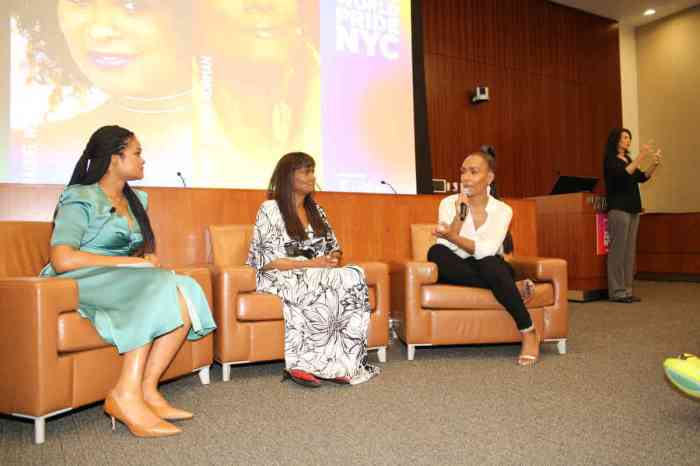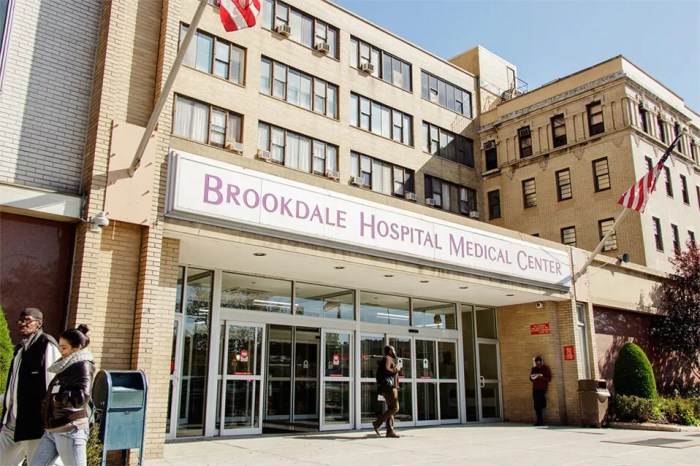The resistance contingent in last year’s LGBTQ Pride March, where it was given a forward spot by Heritage of Pride. | DONNA ACETO
For the second year in a row, Heritage of Pride (HOP), the organization that produces New York City’s annual Pride Parade and related events, may be facing demands that it admit a resistance contingent to the march.
“We want a resistance contingent and we want it to be bigger than 200 people,” said Jamie Bauer, a longtime LGBTQ and AIDS activist, who was proposing one demand that could be made of HOP, while speaking at an April 7 strategy meeting of roughly a half dozen groups held at the Lesbian, Gay, Bisexual & Transgender Community Center. “If they don’t give it to us, we will take it.”
The meeting was called by the Queer Caucus of the Democratic Socialists of America and drew members from Rise and Resist, ACT UP, Queers Against Israeli Apartheid, Gays Against Guns, Jewish Voice for Peace, and other groups. While the meeting came to no consensus about their exact demands, the participants appear to be leaning toward staying engaged with HOP and coming to some resolution that will allow them to march under their own terms.
Heritage of Pride, for now, signals it will not agree to large set-aside
Activists were told that contingents would not have more than 200 people. Also, this year the march, reversing the downtown direction of marches in years past, will start at 16th Street and Seventh Avenue and head south on the avenue, then turn east on Christopher Street and back north at 12th Street and Fifth Avenue. The march will end at 29th Street and Fifth Avenue.
The meeting showcased the ongoing friction between some community activists from a number of groups and HOP over their presence in the annual Pride Parade and longstanding objections to the major corporations that represent a small number of all groups in the annual event, but have a highly visible presence with large floats and contingents. More recently, some groups have objected to how the march is policed and to the presence of police groups, such as GOAL, the Gay Officers Action League, in the parade.
“We would like to keep negotiating,” said Brandon Cuicchi, a member of ACT UP, the AIDS activist group, at the meeting. “Our main goal is still to get the NYPD out of the parade.”
In 2016, HOP resisted letting Gays Against Guns in the parade. The group formed just days after a gunman’s June 12, 2016 killing of 49 people in an LGBTQ nightclub in Orlando, Florida, and well after registration for the march had closed. Corey Johnson, then a member of the City Council and now its speaker, gave his slot in the march to the group. The contingent approached 1,000 people.
Last year, Rise and Resist agitated for a resistance contingent in the parade and eventually won a spot close to the front. That effort began several months before the march. The argument then was that Donald Trump winning the White House required a clear statement from the LGBTQ community.
A rump faction from Hoods4Justice jumped into the resistance contingent and brought the march to a halt in front of the Stonewall Inn, resulting in arrests. | DONNA ACETO
Hoods4Justice, an activist group, jumped in with the resistance contingent. Twelve members of the group were arrested after they halted the parade by handcuffing themselves together just yards from the Stonewall Inn, the site of the 1969 riots that mark the start of the modern LGBTQ rights movement. They timed their blockade to occur just as the NYPD’s marching band, which was leading GOAL, arrived near the Stonewall.
“We’re here to declare that today’s Pride and coming Prides are a no-cop zone,” June, a member of Hoods4Justice, told Gay City News last year prior to the blockade.
There have been similar protests in Pride Parades in Washington, DC, Chicago, Minneapolis, Toronto, and Phoenix.
The groups at the April 7 meeting ultimately took a “temperature check,” which is an informal procedure that allows a vote on a number of proposals and provides a sense of which positions have support. Mostly, the groups favored staying engaged with HOP. There was some support for joining parades in other boroughs. There was little support for skipping the Manhattan parade and holding an alternative unpermitted march or for joining the parade and engaging in civil disobedience during it.
Collectively, the activists have dozens of years of experience. They know that the Manhattan march is the largest in the city and participating can boost the visibility of any group. Organizations that join the festival, which, like the parade, occurs on the last Sunday in June, can see a boost in fundraising.
In a written statement, HOP wrote that the results of the 2016 general election gave “strong reasoning” for admitting the resistance contingent last year.
“A year later, we know the decisions of the Trump Administration and Congressional majority are affecting our community at an intersection of multiple issues,” HOP said. “There are hundreds of groups seeking the platform of the March to show resistance to their oppressors, and we have a responsibility to share that platform fairly. At this time, the only organized contingent in the 2018 NYC Pride March will be the People of Color Contingent, coordinated in partnership with the Audre Lorde Project. We request that all organizations represented by Rise and Resist in regard to this request should register individually, and will be placed into the order of March in the same balanced process we use for placing the hundreds of registered groups.”




































